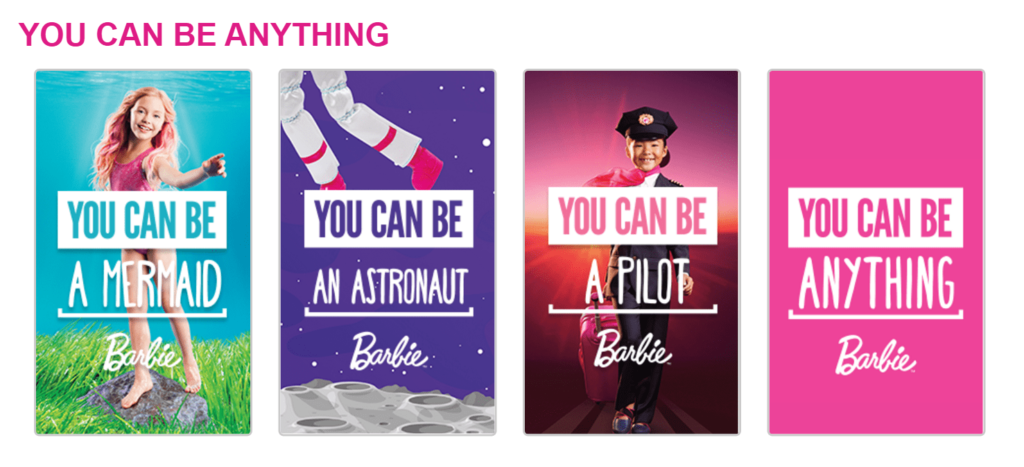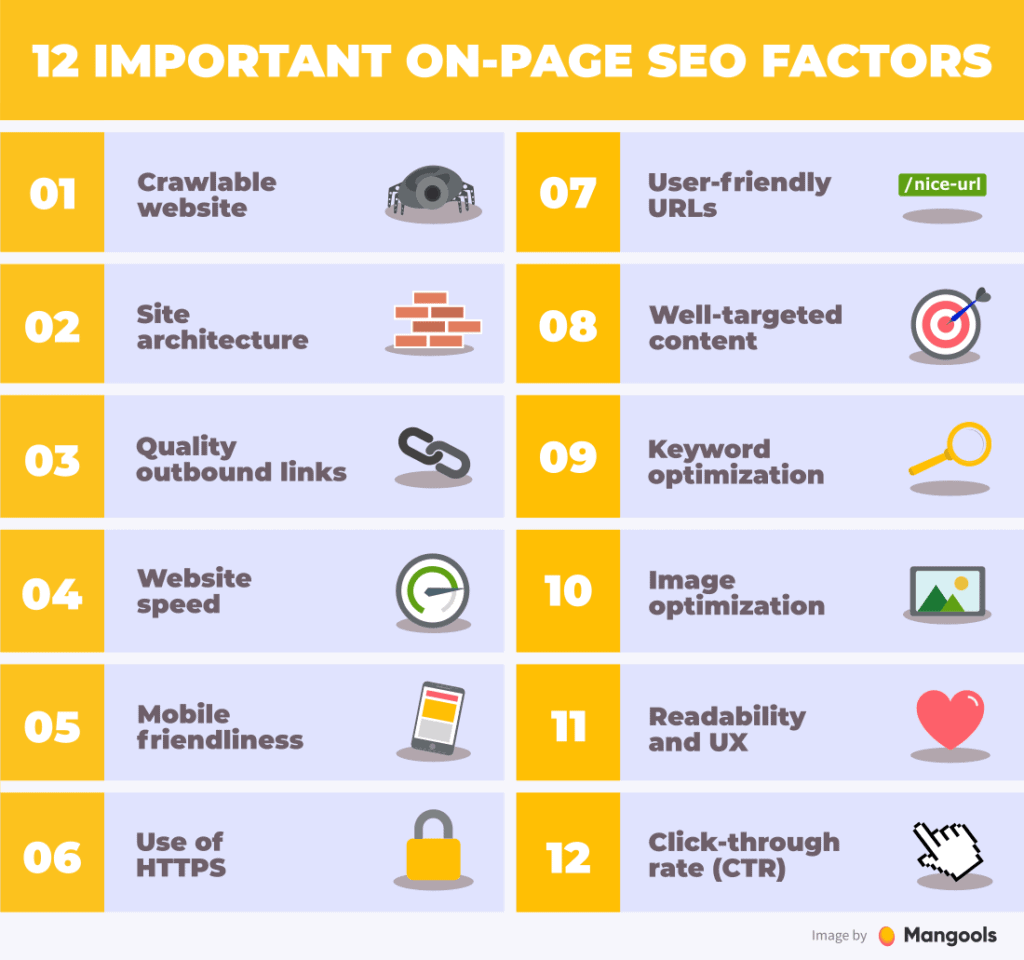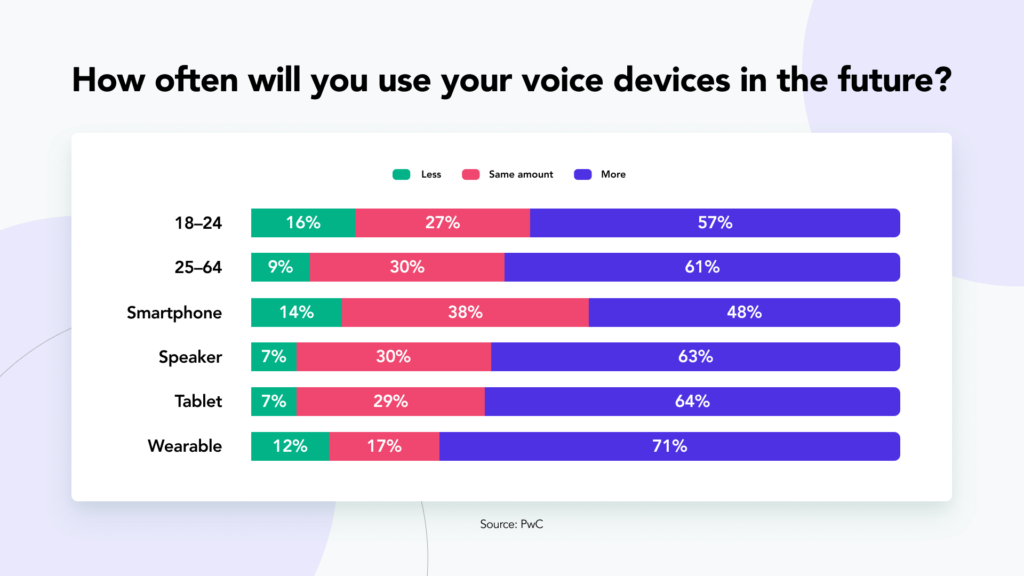Content Marketing Tricks: Social Media, Email, and Beyond
In 2023, when smartphones and social media have created an era of information overload, businesses face an immense challenge in capturing their audience's fleeting attention. With consumers bombarded by a relentless influx of content, more than simply producing more content is required. To stand out, brands must take a strategic approach to content marketing.
The key is to create content that resonates with your target audience and keeps them engaged over time. This requires an in-depth understanding of your customers' needs, interests, and pain points. Armed with these insights, you can craft content that educates, entertains, inspires or helps your audience meaningfully.
An effective content marketing strategy goes beyond one-off viral posts. It's about mapping out a plan to produce valuable content across multiple platforms consistently. This content should all work together to attract your ideal customers, build trust and credibility for your brand, and ultimately drive conversions.
From leveraging the art of storytelling to optimising for search with SEO best practices, this comprehensive guide covers the essentials of crafting standout content. You'll learn proven content marketing tricks to grab your audience's attention, create share-worthy content that spreads, and develop a loyal following of engaged customers. Let's dive in and explore the most effective tactics that will take your content marketing efforts to the next level.
Table of Contents
1: The Power of Storytelling

1.1 Crafting Compelling Narratives
Storytelling has a profound impact on human psychology. Our brains are wired to connect with narratives, making them a potent tool in content marketing. You engage your audience's emotions and create a lasting impression when you tell a story.
The human brain processes stories differently than it processes facts and data. When we hear a story, our brains release oxytocin, which enhances trust and empathy. This emotional connection can be a powerful motivator for action. For instance, consider the story of a struggling entrepreneur who overcame adversity to build a successful business. This narrative inspires and fosters a sense of trust and relatability with the audience.
How to Identify Your Brand's Unique Narrative
Every brand has a unique story waiting to be told. Discovering your brand's narrative involves understanding its history, values, and mission. This section will guide you in uncovering and articulating your brand's story.
Start by reflecting on your brand's origins. What inspired its creation? What challenges have you overcome? What values drive your business? These elements form the foundation of your narrative. For example, if your brand promotes sustainability, your narrative could revolve around your journey to create eco-friendly products and your commitment to a greener future.
Real-World Examples of Brands Using Storytelling Effectively

Storytelling is a powerful marketing technique that can help brands connect with consumers on a deeper level. When done right, brand storytelling goes beyond just selling a product – it taps into emotions, shared values, and the larger cultural narrative. Several brands have leveraged storytelling effectively in recent years.
A prime example is Dove's “Real Beauty” campaign. Beginning in 2004, Dove created online films, print ads, and other content showcasing diverse women and their experiences with beauty standards. The stories resonated with women who often felt unrepresented in media. Dove challenged beauty stereotypes and empowered women to feel comfortable in their skin. This campaign dramatically increased sales and established Dove as a leader in purpose-driven marketing.
Another brand using storytelling well is Airbnb. In 2014, Airbnb launched an integrated campaign sharing stories of their diverse hosts and travellers. Print ads, online films, and social media spotlighted touching stories of hosts welcoming guests and forging connections. Airbnb positioned travel as transformative and emphasised shared humanity. This campaign helped Airbnb become more than a travel company – they stood for belonging.
Patagonia also utilises storytelling effectively. Their brand campaigns and corporate activism focus on environmental protection and sustainability. Patagonia shares stories of their products' origins, manufacturing ethics, and efforts to help save the planet. Customers connect with the larger purpose. Patagonia's stories speak to people who prioritise social responsibility and want to support businesses that share their values.
When crafted thoughtfully, brand storytelling makes abstract products and companies relatable on a human level. Storytelling allows brands to appeal to emotions and strengthen consumer loyalty beyond a simple transactional relationship. More brands should follow the lead of Dove, Airbnb and Patagonia in embracing narrative-based marketing.
1.2 Connecting Emotionally with Your Audience

Emotions play a pivotal role in content marketing. Discover how specific emotions can drive actions, and learn techniques to evoke these emotions through your content.
Emotions are at the heart of human decision-making. Emotions influence our choices: joy, sadness, anger, or fear. In content marketing, tapping into these emotions can be a powerful way to engage your audience. For instance, if your content triggers a sense of excitement about a new product, your audience is more likely to explore it further.
Techniques to Evoke Emotions Through Content
This section dives into practical strategies for infusing your content with emotion. Whether it's joy, empathy, or even fear, you'll learn how to connect with your audience on a deep emotional level.
One effective technique is storytelling through customer testimonials. Sharing stories of satisfied customers who have benefited from your product or service can evoke trust and reassurance. Additionally, visual elements such as images and videos that elicit emotions related to your brand's message can be highly impactful.
Case Studies of Emotionally Impactful Campaigns
Real-world examples of emotionally resonant campaigns will showcase how brands have successfully used emotions to drive engagement and conversions.
Consider the “Always #LikeAGirl” campaign. By addressing the issue of gender stereotypes, this campaign struck an emotional chord with viewers. It garnered millions of views and ignited a global conversation about redefining what it means to do something “like a girl.”
2: SEO Strategies for Content Optimisation

2.1 Keyword Research and Integration
Keyword research is the cornerstone of effective SEO. Understand why it's crucial and how it forms the basis for optimising your content.
Keyword research is the process of identifying the words and phrases people use when searching for information online. By understanding these keywords, you can tailor your content to match what your audience is looking for. This ensures that your content appears in search engine results, driving organic traffic to your website.
How to Find the Right Keywords for Your Content
Discover tools and techniques to identify the most relevant keywords for your content. Keyword selection can make or break your SEO efforts.
Start by brainstorming a list of keywords related to your content. Then, use keyword research tools like Google Keyword Planner or SEMrush to expand your list and identify high-traffic keywords with manageable competition. Look for long-tail keywords (phrases with three or more words) specific to your niche.
Strategies for Seamless Keyword Integration
It's not just about finding keywords; it's about using them naturally in your content. Learn the art of keyword integration that feels organic and enhances the user experience.
Keyword integration should be seamless and natural. Refrain from overstuffing your content with keywords, which can lead to poor user experiences and potential penalties from search engines. Instead, focus on incorporating keywords where they fit naturally within your content. This ensures that your content remains valuable and engaging.
2.2 On-Page SEO Best Practices

Optimising Titles, Headings, and Meta Descriptions
Explore the elements contributing to on-page SEO, including optimising titles, headings, and meta descriptions. These are critical for attracting organic traffic on Google.
Your content's title is one of the first things search engines and users see. It should accurately reflect the content's topic and contain relevant keywords. Similarly, headings (H1, H2, H3) should be used to structure your content and include keywords in blog posts where appropriate.
Meta descriptions, while not a direct ranking factor, attract clicks from search engine results pages. A well-crafted meta description should concisely summarise your content and include a call to action (CTA) to entice users to click through to your website.
Internal and External Linking Strategies
Discover the power of linking within your content. Learn how to effectively link to your content and external authoritative sources for SEO benefits.
Internal linking involves linking from places like blog posts to other pages on your website. This helps search engines understand the structure of your site and improves user navigation. When linking internally, use descriptive anchor text that provides context.
External linking, on the other hand, involves linking to reputable sources outside your website. This can enhance the credibility of your content and provide additional value to your readers. When referencing external sources, ensure they are authoritative and relevant to your content.
Mobile-Friendliness and Site Speed Considerations
In an increasingly mobile world, ensuring your website is mobile-friendly and loads quickly is vital for SEO and user satisfaction.
Mobile-friendliness is a ranking factor for search engines like Google. A responsive design ensures your website adapts to different screen sizes, providing an optimal user experience on mobile devices. Optimising images and using content delivery networks (CDNs) can help improve your website's load speed, which is crucial for SEO and user retention.
3: Content Distribution and Promotion

3.1 Leveraging Social Media Platforms
Not all social media platforms are created equal. Find out which aligns best with your brand and audience, and learn how to leverage them effectively.
Choosing the proper social media channels is essential for reaching your target audience. Each platform caters to different demographics and interests. For instance, Instagram is popular among younger audiences, while LinkedIn is ideal for B2B marketing. Research your audience's preferences and habits to determine which platforms will yield the best results.
Creating Shareable Content
What makes content shareable? Uncover the elements that encourage your audience to spread your message across social networks.
Shareable content resonates with your audience and compels them to share it with their networks. To create shareable content, focus on the following:
- Value: Ensure your content provides value, whether it educates, entertains, or solves problems.
- Emotion: Content that evokes emotions, such as humour or inspiration, is more likely to be shared.
- Visual Appeal: Use eye-catching visuals, such as images, infographics, and videos.
- Easy Sharing: Include social sharing buttons to make it simple for users to share your content.
Measuring the Impact of Social Media on Content Reach
Learn how to track and analyse the performance of your social media efforts. Metrics like reach, engagement, and conversions matter.
Measuring the impact of social media is crucial to determining the effectiveness of your content distribution strategy. Key metrics to monitor include:
- Reach The number of people who see your content.
- Engagement: Likes, comments, shares, and clicks on your content.
- Conversions: Actions taken by users, such as signing up for a newsletter or making a purchase.
Analysing these metrics can help refine your social media strategy to maximise your content's reach and impact.
3.2 Email Marketing for Content Distribution

Building a Responsive Email List
Your email list is a valuable asset. Discover strategies for growing and maintaining a list of engaged subscribers who eagerly await your content.
Building a responsive email list requires more than just collecting email addresses. It involves nurturing relationships with your subscribers and delivering content that resonates with their interests. Here are some strategies:
- Create Compelling Lead Magnets: Offer valuable resources, such as ebooks, webinars, or exclusive content, in exchange for email subscriptions.
- Segment Your List: Divide your subscribers into segments based on their preferences and behaviour to send targeted content.
- Personalise Your Emails: Use personalisation to make subscribers feel valued and understood.
Crafting Compelling Email Campaigns
Email marketing isn't just about sending newsletters but creating campaigns that drive action. Explore the anatomy of successful email campaigns.
Effective email campaigns have a clear goal and a well-defined structure. Whether launching a product, promoting a sale, or nurturing leads, your email should have a compelling subject line, engaging content, and a solid call to action (CTA). Additionally, consider using automated email sequences to nurture leads and guide them through the customer journey.
Analysing Email Marketing Metrics for Success
Dive into the metrics that matter in email marketing. Understanding open, click-through, and conversion rates will help refine your email strategy.
Email marketing metrics provide insights into the performance of your campaigns. Key metrics to track include:
- Open Rate: The percentage of recipients who open your email.
- Click-Through Rate (CTR): The percentage of recipients who click on links in your email.
- Conversion Rate: The percentage of recipients who take the desired action, such as purchasing.
By analysing these metrics, you can identify what resonates with your audience and optimise your email marketing for better results.
4: Measuring Content Effectiveness

4.1 Key Metrics for Content Evaluation
Understanding Essential Content Metrics
To gauge the success of your content marketing efforts, you must understand critical metrics. This section breaks down website traffic, engagement, conversion rates, and ROI metrics.
Measuring the effectiveness of your content is essential for making informed decisions and optimising your strategy. Here are some crucial metrics to monitor:
- Website Traffic: The number of visitors to your website.
- Engagement Metrics: Likes, shares, comments, and time spent on your content.
- Conversion Rates: The percentage of visitors who take a desired action, such as signing up or purchasing.
- Return on Investment (ROI): The financial impact of your content marketing efforts.
These metrics provide a holistic view of your content's performance, allowing you to identify areas for improvement.
Setting SMART Goals for Content Marketing
Learn how to set Specific, Measurable, Achievable, Relevant, and Time-bound (SMART) goals for your content marketing campaigns. Clear objectives are essential for success.
SMART goals provide a clear roadmap for your content marketing efforts. For example, a SMART goal might be to increase website traffic by 20% within six months by publishing high-quality blog posts and promoting them on social media. Such goals are specific, measurable, achievable, relevant, and time-bound, making it easier to track progress and success.
Tools and Analytics Platforms for Tracking Performance
Explore a range of tools and platforms that can help you measure and analyse your content marketing efforts. From Google Analytics to specialised SEO tools, choose the right ones for your needs.
To effectively track and measure content performance, you can leverage a variety of tools and platforms:
- Google Analytics: Provides in-depth insights into website traffic, user behaviour, and conversions.
- SEMrush: Offers comprehensive SEO and content marketing analytics.
- HubSpot: A versatile platform for inbound marketing and content analytics.
- Buffer: Helps manage and track social media performance.
- Mailchimp: An email marketing platform with robust tracking and reporting features.
Select the tools that align with your specific goals and objectives.
4.2 A/B Testing and Continuous Improvement

The Power of A/B Testing in Content Marketing
A/B testing allows you to fine-tune your content for maximum effectiveness. Discover how to conduct experiments that lead to data-driven improvements.
A/B testing, also known as split testing, involves creating two versions (A and B) of a piece of content and testing them with different segments of your audience to determine which performs better. For example, try two separate email subject lines to see which generates higher open rates.
Iterative Content Optimisation Techniques
Content optimisation is an ongoing process. Learn how to use A/B testing results to iterate and refine your content over time.
Once you've conducted A/B tests and gathered data, it's essential to iterate and optimise your content accordingly. This could involve making changes to headlines, images, calls to action, or content structure based on the insights you've gained.
Case Studies of Brands Achieving Growth Through Testing
Real-world examples will showcase how A/B testing and continuous improvement have driven significant brand growth.
One notable case is that of Airbnb. Through rigorous A/B testing, they improved the user experience on their website, resulting in a 30% increase in bookings. This demonstrates the power of data-driven decision-making and continuous optimisation in content marketing.
5: Staying Ahead of the Curve

5.1 Emerging Trends in Content Marketing
Voice Search and AI-Driven Content
Explore the rise of voice search and how AI-driven content is reshaping the content marketing landscape.
Voice search is rising, with more users relying on voice-activated devices like smartphones and smart speakers. To adapt, create content that answers common voice search queries and consider optimising for voice search keywords.
AI-driven content, powered by natural language processing and machine learning, can automate content creation, personalise user experiences, and provide valuable insights. Embrace AI tools to stay competitive and deliver highly relevant content.
Video and Interactive Content Strategies
Video and interactivity are on the rise. Discover how to incorporate these dynamic elements into your content marketing strategy.
Video content is highly engaging and can be used across various platforms, from YouTube to social media. Consider creating video tutorials, product demos, or behind-the-scenes content to captivate your audience.
Interactive content, such as quizzes, polls, and surveys, encourages user participation and provides valuable data. Use interactive elements in blog posts to enhance user engagement and collect insights about your audience.
User-Generated Content and Community Building
Learn how user-generated content can foster a sense of community around your brand and drive engagement.
User-generated content (UGC) involves customers creating content related to your brand or products. Encourage UGC through contests, hashtags, and incentives. You build a community of loyal advocates by showcasing UGC on your website and social media.
5.2 The Future of Content Marketing

Predictions for the Evolution of Content Marketing
Get a glimpse into the future of content marketing. What trends and technologies can we expect to shape the industry?
As content marketing evolves, several trends are likely to shape its future:
- Augmented and Virtual Reality: AR and VR can create immersive content experiences.
- Chatbots and Conversational Marketing: Automated chatbots can engage users in real-time conversations.
- Content Personalisation: AI-driven algorithms will tailor content to individual preferences.
- Sustainability and Ethical Content: Brands will focus on sustainability and ethical content creation to meet evolving consumer expectations.
Preparing Your Brand for What's to Come
As the content marketing landscape evolves rapidly, brands must stay nimble and forward-thinking to adapt to emerging trends. With new technologies, platforms, and consumer behaviours arising, content strategies that were effective yesterday may become outdated tomorrow. To future-proof your brand's content approach, keep these preparation strategies in mind:
Stay on Top of Content Marketing Trends
Regularly research industry reports, attend conferences, follow thought leaders, and keep tabs on new technologies. Identify shifts that may impact your audience and brand messages. For instance, the rise of voice search requires optimising content for conversational queries. And as streaming becomes the norm, video content is more critical than ever. Monitor for changes to stay ahead of the curve.
Invest in Your Team's Skills
Content creators, strategists, and distributors need continuous training to harness cutting-edge tactics. Allocate resources for team members to learn in-demand skills like podcasting, AR/VR content, interactive video, and AI-generated text. Send creatives to workshops on emerging tech. Foster an agile, growth mindset across your department. Empower your team to pilot new ideas with executive support.
Embrace Experimentation
With rapid change, brands must take more risks, test innovative formats, and diversify content distribution. Pilot an Instagram Reels strategy, develop a branded gaming app, or experiment with digital out-of-home content. Analyse performance data, gather real-time audience feedback and quickly iterate. View experiments as opportunities to determine what resonates in this shifting landscape.
Centre Your Audience's Experience
Ultimately, the consumer remains at the heart of great content. Gather first-party data and qualitative insights into your audience's preferences, pain points, and changing behaviours. Identify what motivates them in this new era of the digital-first customer journey. Let their needs and response to new ideas guide your content innovation.
Trailblazing Examples
Forward-thinking brands are already embracing cutting-edge content marketing strategies and technologies:
- Starbucks utilises machine learning to create hyper-personalised mobile offers and recommendations based on individual customer data and behaviours.
- Cloud computing company Box modernised its trade show strategy by developing an interactive virtual reality experience of its conference booth, increasing virtual engagement.
- L'Oreal launched haptic technology on a smart device app, allowing users to try on different makeup with tactile feedback virtually.
- To announce their limited-edition sneaker launch, Adidas created an augmented reality experience in partnership with Snapchat, seamlessly blending digital content with the real-world camera view.
By studying early adopters, brands can get inspiration on innovative ways to connect with audiences through immersive, tech-driven content. The future favours the bold.
Conclusion
Content marketing is a constantly evolving discipline that demands creativity, strategic thinking, and the ability to adapt to new technologies and trends. To be successful, brands must embrace content marketing as an ongoing process that requires continued innovation rather than a one-time tactic.
The bedrock of impactful content marketing is masterful storytelling. By crafting compelling narratives that engage audiences rather than overtly promoting products, brands can attract and retain customers. However, even the most captivating stories will fall flat without optimisation for search engines. Savvy content marketers must leverage SEO best practices, like keyword research and metadata tagging, to ensure content surfaces for relevant searches.
There needs to be more than stellar content – it must also be distributed across channels where target audiences are most active. Strategic distribution across social platforms, email marketing, and owned media is critical. Content syndication through affiliate programs and partnerships can expand reach.
To refine strategy, marketers must diligently measure content performance through metrics like engagement, conversions, and sales impact. These insights allow refinement of messaging, topics, formats, and more.
With agility and foresight, brands can stay ahead of emerging content marketing trends. From interactive content formats like VR and live video to AI-generated content, innovations continue to reshape the field. Maintaining a finger on the pulse of new technologies and experimenting with those that align with your goals is imperative.
The content marketing landscape is characterised by constant change. By combining analytical and content marketing tricks, brands can navigate this dynamic space adeptly. With an obsession for storytelling, optimisation, distribution, analysis, and innovation, content marketing can provide a sustained competitive advantage for years.
Content Marketing Tricks TLDR
What is the role of storytelling in content marketing?
Storytelling in content marketing helps brands connect with their audience emotionally, making the content more engaging and memorable.
How can I effectively integrate keywords into my content?
Conduct thorough keyword research to identify relevant keywords, and then seamlessly incorporate them into your content while ensuring it flows naturally.
What are the key metrics to measure content marketing success?
Essential metrics include website traffic, engagement (likes, shares, comments), conversion rates, and ROI. The choice of metrics should align with your goals.
Are there any upcoming trends in content marketing to watch out for?
Emerging trends include voice search optimisation, video content, and user-generated content. Staying updated with these trends can give your brand a competitive edge.
How can I stay ahead in the ever-evolving field of content marketing?
Continuously educate yourself on industry trends, experiment with new strategies, and be open to adapting your approach based on audience feedback and changing algorithms.
